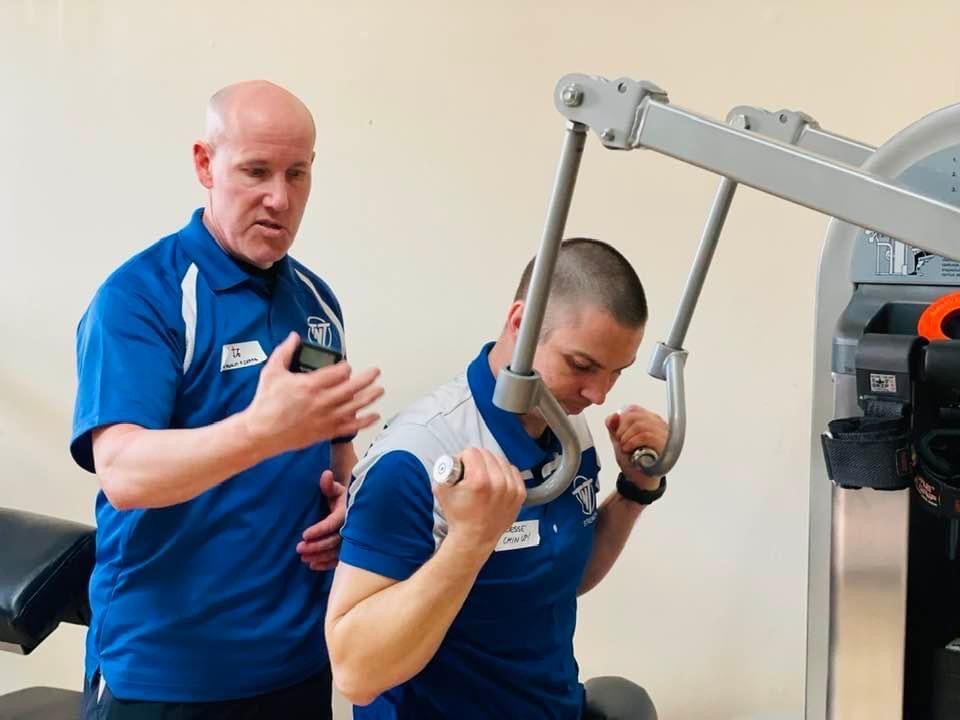GLP-1 Drugs and Strength Training: The Missing Link for Long-Term Success
You've seen the headlines: Ozempic, Wegovy, Mounjaro — GLP-1 drugs are everywhere. They're powerful, and they work. But they're not magic. Like any tool, they do best in the hands of someone who knows how to use them. At TNT Strength, that means pairing smart strength training with medication when appropriate so the results last.
What GLP-1 drugs actually do (short version)
GLP-1 receptor agonists and related drugs help control appetite and blood glucose, slow gastric emptying, and drive large, clinically meaningful weight losses in trials. Big trials have shown substantial, sustained weight loss with semaglutide and tirzepatide. New England Journal of Medicine

The catch: you can lose muscle too
Weight loss is almost always a mix of fat and lean mass. Recent analyses and DXA substudies show that GLP-1 and related drugs reduce fat mass strongly — but they also reduce lean mass to a nontrivial degree in many people. That doesn't mean don't use the drugs; it means plan for it. PubMed
Why strength training isn't optional — it's essential
Strength training is the signal your body needs to keep muscle while you lose weight. Decades of research show that adding resistance training during calorie deficit preserves fat-free mass, supports protein metabolism, and keeps functional strength up while you drop weight. In short: lift to protect what matters. PMC

What the research says about the combo (quick take)
- GLP-1 drugs → large fat loss but some lean mass loss is common. Plan around it. New England Journal of Medicine
- Resistance training during weight loss → preserves lean mass and function. That's the safety net. PMC
- Nutrition matters: during energy deficit, higher protein intakes help preserve muscle mass (studies support intakes well above the RDA when losing weight). Don't skimp on protein. ScienceDirect

Practical TNT Strength prescription (evidence-based, simple)
We keep things practical. Here's how we pair GLP-1 meds with a strength-first plan:
1. Lift at least twice per week
(full-body focus).
Two sessions a week of compound, progressive resistance work is a minimal, evidence-based foundation for preserving and building muscle when combined with adequate protein and recovery. (Research and guidelines consistently recommend 2–3 weekly resistance sessions as an accessible sweet spot for most adults.) SpringerLink
2. Prioritize protein
— aim for higher protein during weight loss.
Evidence shows eating more protein during an energy deficit preserves lean mass better than low protein. A typical practical recommendation is ~.75–1.0 g/lb. Of target bodyweight (often adjusted up for older adults or larger caloric deficits). Make every meal count. ScienceDirect
3. Progressive overload, but keep it sane.
You don't need complicated periodization. Two or three weekly sessions with a handful of compound lifts (squat or hinge, press, row/pull, loaded carry) done progressively will do the heavy lifting for you.

4. Watch the signals — not the calendar.
If strength drops, recovery flags, or movement quality degrades, we adjust — change a variation, reduce volume, or simplify technique cues. That responsive approach keeps progression sustainable.
5. Track function, not just pounds.
Keep an eye on strength, movement quality, energy, and daily function — those are the wins that matter long term, not just a short-term number on the scale.
A quick note about safety & expectations
GLP-1s are clinically useful and can be life-changing for many. But several studies and reviews have highlighted the lean mass losses that can accompany drug-induced weight loss — that's why strength training and nutrition are not optional; they're the insurance policy. Using medicine to start weight loss and using strength training to secure and sustain it is the combo that makes sense. New England Journal of Medicine

Why TNT keeps things simple (and why that's smart)
You'll read a thousand systems and periodized charts promising the "perfect" schedule. The truth? No single program is universally superior. Evidence shows many programs work — what matters is consistency, stimulus, and recovery. We prefer simple, repeatable, effective plans: they're easier to follow, easier to recover from, and easier to keep doing for years. When the science shows a benefit, we use it; when the science shows more complexity doesn't pay off for the client, we skip it.
TAKU's note:
GLP-1 drugs can jump-start change. Strength training ensures that change is durable, functional, and healthy. If you're using — or thinking about using — a GLP-1 medication, don't view it in isolation. Pair it with focused resistance training, solid protein, and a coach who watches the signals, not the calendar. That's how you win for the long haul.
Research at a glance (click to read):
- Semaglutide (Wegovy) weight-loss trial & DXA substudy. New England Journal of Medicine
- Tirzepatide (SURMOUNT) weight-loss trial showing major fat loss (and lean mass effects). New England Journal of Medicine
- Systematic review: semaglutide and lean mass concerns. PubMed
- Resistance training preserves fat-free mass during diet. PMC
- Higher protein during energy deficit helps preserve lean mass. ScienceDirect
Experience the TNT Strength difference with a free workout.
START YOUR FITNESS TRANSFORMATION WITH A
FREE WORKOUT
Complete the form and we'll set up an appointment for you.











